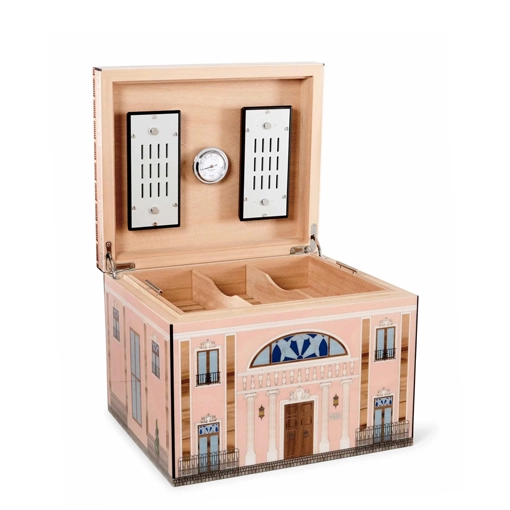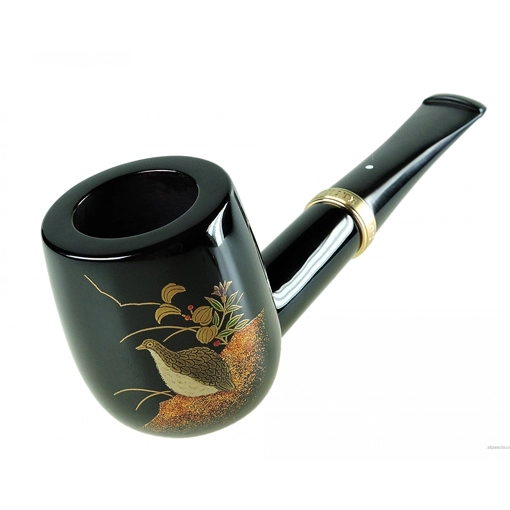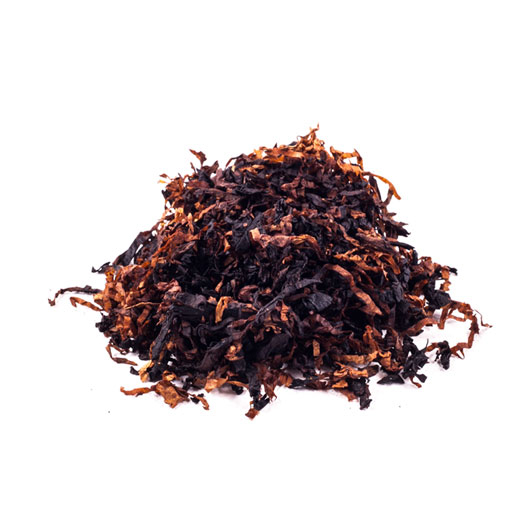News, Pipe Smoking Blogs, The Cigar Blog
Beginner’s Guide to Smoking a Pipe
Smoking a pipe can be an enjoyable and relaxing hobby. Pipe smoking has a rich history dating back centuries, with tobacco pipes being enjoyed by smokers around the world.
Whether you’re a complete beginner or a seasoned pipe enthusiast who wants to brush up on their skills, this guide will provide you with all the essential information about smoking tobacco pipes.
How to Choose a Tobacco Pipe
Pipes come in all shapes, sizes and materials. Whether it be the Billiard, Apple or Calabash, it allows for a comfortable hang from the mouth; whilst the contemporary classic, the Poker, has acquired a cult following due to its intriguing, rigid shaping.
Tobacco pipes have been made from such materials as corn cobs, clay and Meerschaum over the years, but the most common material would be the root from the Briar wood, an evergreen shrub found in the Mediterranean. The root is chosen because of its natural heat-resisting and moisture absorption properties and after curing, its inability to taint the flavour of the pipe tobacco.
Briar pipes are recommended for beginners due to their durability and heat-resistant qualities.
Take a look at our guide to tobacco pipes to uncover the style of pipe that appeals to you most.

Best Pipe Tobacco for Beginners UK
There are countless pipe tobacco blends to choose from, each offering a different flavour and aroma. As a beginner, it’s best to start with a mild and straightforward blend.
Virginia tobacco is one of the most popular types for pipe smokers, and it is great for beginners, as it is so mild. It also contains the highest level of natural sugars of all blending tobacco types, which gives it a slightly sweet taste, which can be appreciated by novice smokers.
Try:
- Kendal Gold No.9 CCN Coconut Shag Tobacco – Made from 100% bright Virginia leaf, it is very mild with a coconut flavour.
- Gawith Hoggarth American Delight Pipe Tobacco – a blend of the finest quality Virginia and black Cavendish with a rich top note of cocoa, vanilla and fresh fruits. It is light to medium in strength and produces a rich sweet aroma.

What Kit Do You Need to Smoke a Tobacco Pipe?
To smoke a tobacco pipe, you will need a few essential items. Here’s a list of the basic kit for smoking a tobacco pipe:
- Tobacco Pipe: Choose a pipe that suits your style and preferences.
- Pipe Cleaners: These are thin, flexible brushes designed specifically for cleaning tobacco pipes. They help remove residue and moisture from the stem and shank of the pipe.
- Pipe Tool: A pipe tool is a small instrument that typically combines a tamper, a scraper, and a pick. The tamper is used to pack the tobacco, the scraper helps clean the bowl, and the pick aids in clearing the draft hole or removing blockages.
- Pipe Lighter or Matches: It’s recommended to use a pipe lighter or wooden matches for lighting a tobacco pipe. Regular lighters may affect the taste of the tobacco due to the chemicals used in the fuel.
- Pipe Tobacco: Choose a quality pipe tobacco that suits your taste preferences. Pipe tobaccos come in various blends, such as aromatic, English, Virginia, or Burley. Experimenting with different blends can help you find your favourites.
- Optional accessories include a pipe stand or rack for storing your pipe when not in use, a tobacco pouch or jar for keeping your tobacco fresh, and a pipe case or pouch for carrying your pipe when travelling.

How to Pack a Tobacco Pipe
Packing a tobacco pipe involves a specific technique to ensure an even burn and enjoyable smoking experience.
Prepare the Pipe
Ensure that your pipe is clean and free from any remnants of previous smokes. Use a pipe cleaner to clear any debris or moisture from the stem and shank.
Three Layer Method
There are various packing methods, but the most common one is the three-layer method. It involves the following steps:
- Take a small pinch of loose pipe tobacco and add it to the pipe’s chamber. Ensuring it is loose and not too densely packed in, fill around half of the chamber with tobacco.
- Add in another pinch of tobacco to the chamber, until it is around three-quarters full, before gently pressing down on the tobacco with a pipe tamper or your finger. Ensure you only gently remove the gaps, rather than crush the tobacco down.
- Add another pinch of loose tobacco into the chamber until it reaches the rim of the chamber. Again press down on the tobacco, pushing the tobacco together to pack it again, avoiding compacting all of the tobacco. It should remain evenly against the rim of the chamber or slightly below it.

How to Light a Tobacco Pipe
Lighting your tobacco pipe usually comes in a couple of stages:
The First Light or Charring Light
Using your pipe lighter, hold the flame above the tobacco and move it in a circular motion. Take a couple of draws while lighting the pipe. The tobacco will become charred, not fully lit, and the first light almost always goes out – this stage is known as the charring light.
The charring light will go out, usually within less than a minute. Use a tamper to pack the tobacco down again, as this helps embers to form in the chamber of the bowl.
The True Light
Once the first light is out, you will need to light the pipe again. Take a couple of draws after the pipe has been lit to ensure it lights evenly. Try not to overdraw, as this can negatively affect the taste of the tobacco.
If your pipe was packed properly, it should remain lit throughout the duration of your smoke. You can occasionally pack the tobacco to keep the embers going.
Keeping the Pipe Lit
Sometimes, no matter how perfectly you’ve packed the bowl, the tobacco just struggles to stay lit. If you’re having that problem, you need to cover the bowl with your fingers, but leave a little hole for air to pass through. Take a few, quick, sharp puffs and then uncover the bowl – this is referred to as stoking the pipe.
To keep the pipe lit, you’ll need to puff routinely. Puffing too much can make the pipe get too hot, which can cause tongue bite. If the bowl of your pipe feels too hot to touch, you need to slow down the speed at which you are puffing.

Fixing Common Pipe Smoking Problems
Tobacco pipes, like any other smoking devices, can encounter a few common problems. Here are some potential issues you may face with tobacco pipes and suggestions for how to address them:
Clogged Tobacco Pipe Bowl
Over time, tobacco residue can accumulate in the bowl, leading to clogging. To fix this, try using a pipe tool or a pipe cleaner to gently scrape away the debris and clear the airway. Be cautious not to damage the pipe bowl in the process.
Moisture Buildup in Tobacco Pipes
Moisture can collect inside the stem and bowl, resulting in gurgling sounds and decreased smoking quality. To resolve this, consider using a pipe cleaner to remove any excess moisture and allow the pipe to dry thoroughly before using it again. Additionally, you may want to use a moisture trap or filter to absorb excess moisture during smoking.
Burnout or Cracks in Tobacco Pipes
Pipes made of low-quality materials or those exposed to excessive heat can develop burnout or cracks in the bowl. Unfortunately, this issue is challenging to fix, and the best solution is to replace the pipe. To prevent burnout or cracks, ensure you don’t overheat the pipe while smoking and choose pipes made of durable materials such as briar wood or meerschaum.
How to Stop Tongue Bite When Smoking a Pipe
Tongue bite refers to a burning sensation on the tongue caused by excessive heat or improper smoking technique. To alleviate this issue, slow down your smoking pace, ensure the tobacco is properly packed in the bowl, and use a filter or a cooling mouthpiece if necessary. Additionally, choosing milder tobacco blends or adjusting your packing technique can help reduce tongue bite.
Ghosting or Flavour Taint When Smoking a Pipe
Ghosting occurs when the taste of a previously smoked tobacco blend lingers in the pipe and affects subsequent smoking sessions. To address this, you can clean your pipe thoroughly using a pipe cleaner, alcohol-soaked cotton swabs, or pipe cleaning solutions. Regular cleaning and rotation between different tobacco blends can help prevent ghosting.
Remember, proper pipe maintenance and care are essential for enjoying a tobacco pipe to its fullest potential. Regular cleaning, avoiding excessive heat, and using quality tobacco and accessories can help minimise many of the common problems associated with pipe smoking.









